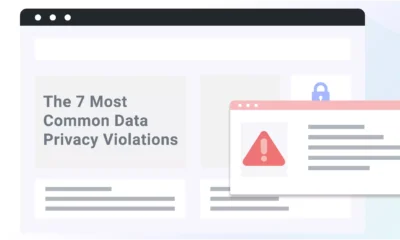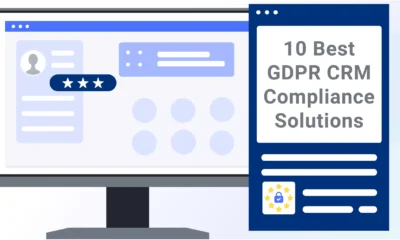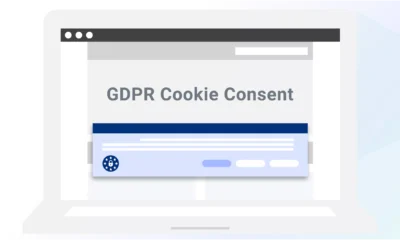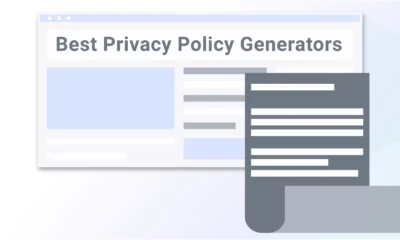Building trust online isn’t just an admirable goal anymore; it’s essential, especially if you’re looking to collect, process, or use personal data about your consumers.
Earning customer credibility is key to making them feel safe, valued, and well-informed when they’re on your site, proving they can trust you to handle their information securely.
Below, I present five ways to prove you’re responsible and effectively build consumer trust.
Why Building Consumer Trust Online Matters
Recent data privacy statistics show a consistently increasing trend of consumers expressing how much they value their privacy and data security.
According to a TrustedSite study on the state of ecommerce trust in 2024, 97% of consumers have concerns when shopping on unfamiliar sites.
Consumer concern spans generations, even reaching Gen Z consumers. These younger shoppers are on high alert for brands they can trust.
Another study from Trustpilot about consumer insights revealed that 79% of Gen Z shoppers feel it’s more important now than ever to buy from trustworthy brands.
Online businesses that don’t keep up with consumers’ transparency and security expectations risk falling behind the competition.
The good news is that you can start building and maintaining consumer trust on your website by implementing the five tips I’ve compiled below.
Tip #1: Display Trust Badges and Certifications

One of the simplest ways to reassure customers is to display reputable trust badges across your website.
Third-party certifications and badges tell visitors that reputable organizations vetted your site for key concerns, like data security and privacy.
You can display certifications that directly address consumer concerns, from website security to business validity to identity theft protection.
New research from TrustedSite shows that 84% of consumers are more likely to trust a site that prominently displays a third-party trust badge than one that doesn’t.
TrustedSite emphasizes that these badges aren’t just decorations. Many e-commerce businesses use A/B testing to see how they affect customer behavior, and often, the version with the trust badge wins out, with conversions improving by over 10%.
Websites can achieve these badges in various cost-effective ways. For example, TrustedSite’s free plan provides sites with a security certification, and you can display their Trustmark to up to 500 monthly visitors.
Tip #2: Show You Take Privacy Seriously
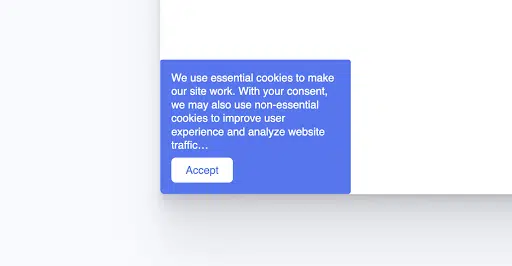
Today’s consumers care about their privacy and want to know what’s happening with their personal information and who handles it.
According to research from McKinsey, 85% of people say knowing a company’s data privacy policies is a make-or-break factor before making a purchase.
Nearly half of consumers consider switching to a competitor if they’re unsure about a brand’s data practices.
Beyond just being good practice, having a clear privacy policy is legally required by privacy laws like the General Data Protection Regulation (GDPR) and the California Consumer Privacy Act (CCPA).
Similarly, you can set up cookie consent tools to allow consumers to choose their level of data sharing. By giving them control, you’re signaling that you respect their autonomy, which goes a long way in building trust.
It also helps you meet consent requirements outlined by the privacy laws I mentioned.
Solutions like Termly’s Privacy Policy Generator and Consent Management Platform make creating and maintaining compliant privacy documents easy and help your business communicate these legal commitments effectively to customers.
Tip #3: Collect & Display Reviews from Other Consumers

Social proof is another powerful signal of trust. Customer reviews act as digital word-of-mouth, often impacting buying decisions more than a well-polished sales pitch.
According to BrightLocal, 50% of consumers trust reviews as much as personal recommendations from friends and family.
Research from Edelman also shows that 79% of consumers actively engage with brands by reading reviews or leaving feedback.
But there’s a catch: authenticity is essential.
Over half of respondents say they would stop trusting a brand if it seems fake or insincere.
You should encourage satisfied customers to leave reviews by making it super easy, like inviting customers post-purchase to share their experience via an automated email.
Bonus Tip: Display a range of reviews, even the occasional less-than-perfect one. Consumers appreciate transparency, and showing you handle criticism well can boost credibility.
Tip #4: Make Contact Information Easy to Find

Nothing frustrates customers more than needing help and not knowing how to get it. They want to know you’re there to help if they have questions or issues.
A survey by HubSpot indicates that 62% of consumers see visible contact information as essential for trust.
I recommend offering multiple support channels, such as live chat, email, and phone support, for a more customer-centric approach.
In some cases, it may also make sense to outsource live chat support so customers always have real-time assistance available, even outside normal business hours..
Consider adding a “Contact Us” page with a simple form to streamline communication and reassure your site visitors.
You can use AI chatbots for more straightforward, quick questions that don’t need a live agent.
With AI, you’ll be able to offer 24/7 support on your site, which is helpful for users seeking immediate answers, and your customers will feel valued and supported around the clock.
Tip #5: Highlight Awards, Recognitions, and Customer Logos

Highlighting awards, recognitions, or logos of your well-known customers is a powerful way for business-to-business brands to build credibility.
If you’ve received any awards or certifications, don’t hesitate to show them off. It shows that your brand is respected and valued in your industry.
Displaying familiar logos, awards, or certifications sends a message that others already trust your business, including those recognizable to your audience.
Summary
Consumer skepticism is now the norm, which means trust-building must be an ongoing effort for online businesses.
Taking efforts like publishing a legally sound privacy policy on your site, displaying trust badges, posting authentic reviews, and ensuring your contact information is easily accessible adds to a customer’s sense of security.
Implementing these trust-building strategies may help your brand’s credibility and conversions improve and encourage customers to keep coming back.




